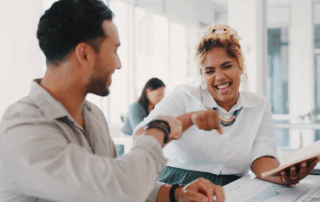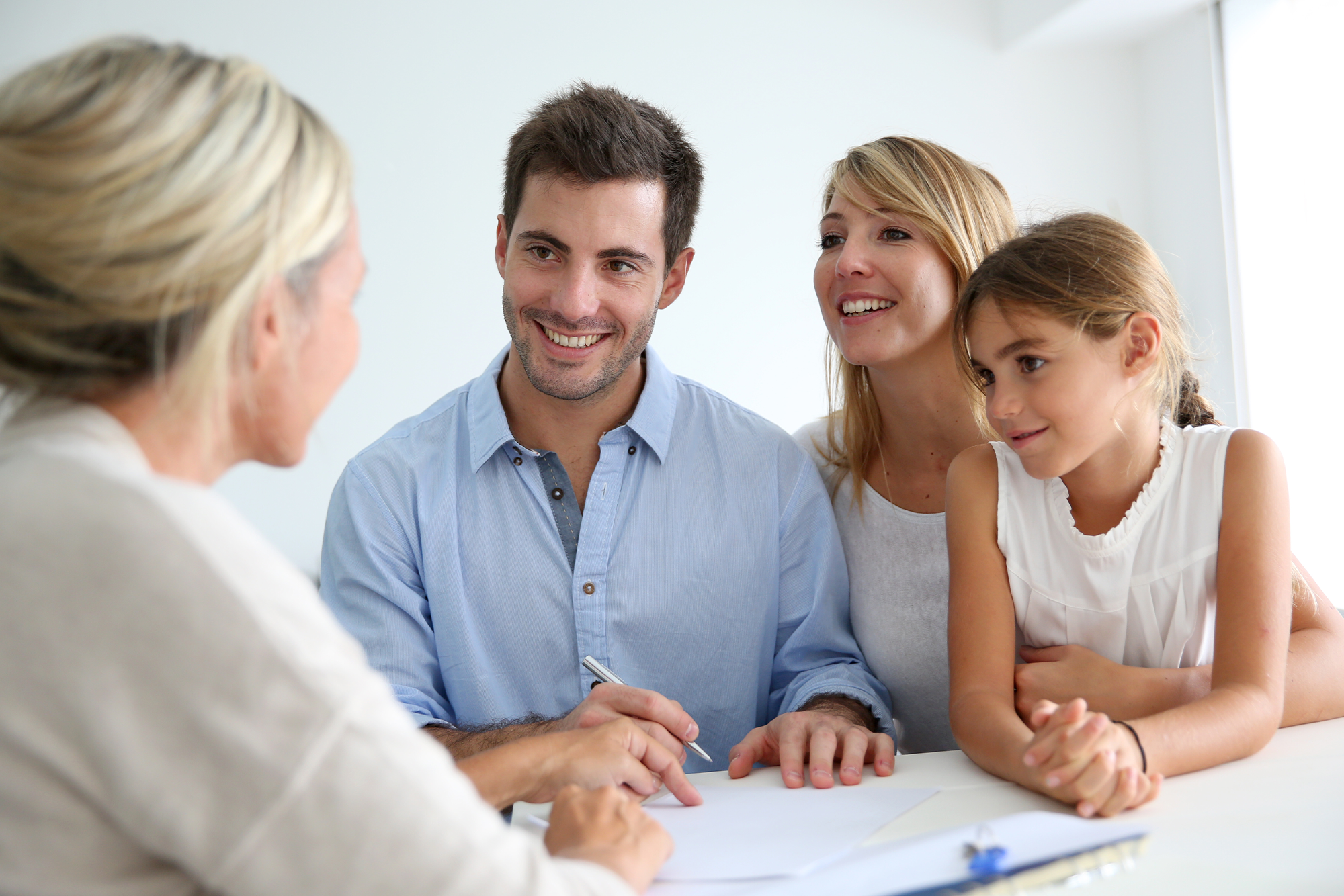As increasing numbers of women enter the construction trades, concerns about their health and safety are growing. In addition to the primary safety and health hazards faced by all construction workers, there are safety and health issues specific to female construction workers. The small percentage of females within the construction trades and the serious health and safety problems unique to female construction workers have a circular effect. Safety and health problems in construction create barriers to women entering and remaining in this field. In turn, the small numbers of female workers on construction worksites foster an environment in which these safety and health problems arise or continue.
Hazards for Women on Construction Sites
There are common hazards for women that work on construction sites. Know how to identify these risks to keep your employees safe:
- Workplace culture: The construction industry has been overwhelmingly male-dominated for years, and on many job sites, female construction workers are not welcome. Isolation—working as the only female on a job site or being ostracized by co-workers—evokes both stress and fear of assault. Many female construction workers say they are reluctant to report workplace safety and health problems for fear of being tagged as complainers or whiners, which would further strain their workplace relationships and jeopardize their employment.
- Hostile workplace: A hostile workplace presents safety and health concerns on several levels, ranging from a lack of training and safety information to physical assault. The effects of a hostile workplace are visible in acute as well as chronic stress reactions. OSHA has already begun to recognize workplace violence as an occupational safety and health issue.
- Sexual harassment: Sexual harassment is a serious problem for female construction workers. Sex discrimination and anti-women attitudes are still prevalent on worksites, despite the fact that sex discrimination is illegal. According to a USA Today analysis of U.S. Equal Employment Opportunity Commission and Bureau of Labor Statistics data, female construction workers have the second-highest rate of sexual harassment complaints per 100,000 employed women.
Sexual harassment complaints at worksites range from subtle forms such as being stared at or seeing “pinups” of naked and nearly naked women to more blatant forms such as unwanted sexual remarks (including comments on appearance), being touched in sexual ways and sexual assault.
One illustration of how sexual harassment is an occupational safety and health issue is prevalent in a recent settlement between a construction company and 14 employees, seven of which were female. According to the Department of Labor, L&M Construction permitted sexual harassment, retaliated against workers who complained about a hostile work environment and interfered with a federal investigation. During a workers’ outreach forum in 2012, department officials were alerted to complaints of sexual harassment that included inappropriate touching, lewd acts, sexual gestures, comments and propositions directed at female employees of L&M. Officers discovered that the company terminated nine employees for complaining about the hostile work environment created by this harassment and fired an additional five workers to prevent them from being interviewed during a compliance review.
- Hazard reporting: The work culture described above—combined with female construction workers’ more tenuous hold on their jobs than that of the more senior workers or male workers—often deters women from reporting unsafe or unhealthy working conditions. Women in a NIOSH study reported that they could not bring up the issue of proper restrooms or worksite safety, because doing so might threaten their employment.
- Access to sanitary facilities: Access to sanitary facilities is frequently a problem on new construction sites. Temporary facilities are usually unisex, often without privacy and generally not maintained well. The availability and cleanliness of restroom facilities are major concerns for women. According to a survey report by Chicago Women in Trades (CWIT), 80 percent of female construction workers have encountered worksites with either dirty toilets or no toilets whatsoever. Respondents to the CWIT survey said that facilities, when available, were filthy or were some distance from the site. Unclean facilities and the avoidance of using them can result in disease, including urinary tract infections (which can happen when a person delays urinating). Because of this, women report that they avoid drinking water on the job, risking heat stress and other health problems. Courts have found that the lack of appropriate sanitary facilities is discriminatory and violates OSHA standards.
- Personal protective equipment (PPE) and clothing (PPC) fitment: Many women in nontraditional jobs, such as the construction trades, complain of ill-fitting PPC and PPE. Clothing or equipment that is not sized properly or does not fit can compromise personal safety and the protection offered. It also may not function effectively in the manner for which it was designed. This can cause serious health and safety risks for women.
Ill-fitting PPE may be due to unavailability (e.g., manufacturers don’t make it or distributors don’t stock it), limited availability or lack of knowledge among employers and workers about where equipment designed for a woman’s body structure can be obtained.
- Ergonomics: Studies have shown that to reduce work-related musculoskeletal disorders, tools, materials and equipment should be designed based in part on ergonomic considerations. Tools and equipment, like clothing, are often designed to be used by average-sized men.
Handle size and tool weight are designed to accommodate the size and strength of men, yet the average hand length of women is 0.8 inches shorter than the average man’s. A woman’s grip strength averages two-thirds of the power of a man’s grip. The grips of tools are typically too thick. Tools like pliers require a wide grasp, which puts too much pressure on the palm, leading to the loss of functional efficiency. In addition, women do not receive training on how best to use tools and equipment designed for men.
- Reproductive hazards: There is inadequate information on the extent to which female construction workers are exposed to reproductive hazards in the workplace. Reproductive hazards are defined as chemical, physical or biological agents that can cause either reproductive impairment or adverse developmental effects on fetuses.
Only a few agents or conditions have been identified as being capable of producing structural abnormalities or birth defects, with a fraction of those being common to construction sites (e.g., polychlorinated biphenyls (PCBs), hypothermia and, for hazardous waste workers, ionizing radiation). In addition, several agents such as lead, solvents and pesticides have been recognized to affect sperm development. The vast majority of construction workers are of reproductive age and are at risk of potential harm if exposed to chemicals and conditions which have not been fully studied with respect to their reproductive hazards in humans.
Some employers find it easier to resolve potential problems by denying jobs to women, especially pregnant women. This is in spite of Supreme Court rulings prohibiting employers from continuing such a practice. While these actions may be well-intended, their effect is needless limitation on work opportunities for women. This can lead to discriminatory treatment and result in a female construction worker hiding her pregnancy, possibly endangering herself and her unborn child.
Recommendations for Improving Female Safety
Take steps to promote the safety of female employees:
- Workplace culture
- Include sexual harassment prevention training in safety and health programs.
- Ensure all communication materials are gender-neutral and include women. Visual materials should include examples of female construction workers to promote an integrated construction workplace.
- To address the problem of workplace isolation, employers, apprenticeship programs and unions (where responsible) should assign female workers to work in groups of two or more when possible, especially those who are relatively new to the construction trade.
- Make sure supervisors are trained in ensuring the safety of female workers and can answer any questions workers may have.
- Sanitary facilities
- Gender-separate sanitary facilities should be provided on worksites.
- Where changing rooms are provided on construction sites, they should also be gender-separated and provided with inside and outside locking mechanisms.
- Employees should be allowed to use sanitary or hand-washing facilities as needed.
- Toilet facilities should be kept clean and in good repair with clean toilet paper within reach.
- Hand-washing facilities should exist within close proximity to toilet facilities.
- Health and safety training
- Employers and unions should make skills training courses available and encourage all workers to take advantage of them.
- Journeymen should establish mentoring relationships with new workers to provide informal skills and safety training.
- Supervisors need to emphasize safety as well as productivity on the job site.
- Employers should emphasize that safety training is as important as skills training.
- PPE and PPC
- The design of PPE and PPC for women should be based on female measurements.
- Union apprenticeship programs should provide female construction workers with resources on where to find equipment and clothing that fits.
- Employers should make sure that all workers of all sizes have well-fitting PPE and PPC for safe and efficient performance.
- Ergonomics
- It should be accepted that some workers need to use different lifting and material handling techniques.
- Employers, unions, apprenticeship programs and other training entities should review skills training programs to see whether alternative methods are included for getting work accomplished by workers of different sizes or strengths. All programs should emphasize the importance of safe lifting.
- Workers need to hear from employers and unions that it’s acceptable to ask for help and to explore alternative ways to lift and carry.
- All workers should be trained in the proper ways to lift and bend.
- Reproductive hazards
- Employers should post Safety Data Sheets (SDS) for each chemical present on the worksite.
- Workers should read all SDSs and share the information with their physicians if they are pregnant or planning to start a family.
- All workers should educate themselves about the potential reproductive risks from exposure to certain chemicals.
- Employers should make reasonable accommodations for workers in later stages of pregnancy, rather than forcing them out of the workplace.
- During the later stages of pregnancy, women should consult with their physicians about strenuous physical activities on the job.
For more construction safety tips, contact INSURICA today.
This is not intended to be exhaustive nor should any discussion or opinions be construed as legal advice. Readers should contact legal counsel or an insurance professional for appropriate advice. ©2024 Zywave, Inc. All rights reserved
About the Author
Share This Story
Related Blogs
Personalization Now a Baseline Expectation in Employee Benefits
In 2025, personalization has moved from “nice to have” to “non-negotiable.” Employees expect benefits that reflect their individual needs, values, and life stages. Static, one-size-fits-all plans are being replaced by flexible, modular offerings that empower employees to choose what matters most.
Fertility, Family Planning, and Parental Leave Are Front and Center
In 2025, family-building support has emerged as a defining priority in employee benefits strategy. Fertility coverage, inclusive parental leave, and caregiving support are no longer niche offerings — they’re central to how employees evaluate workplace value. As life paths diversify and caregiving responsibilities expand, benefits managers are rethinking what it means to support the whole employee.
Gag Clause Attestation Deadline: December 31, 2025
Employer-sponsored group health plans must submit their 2025 Gag Clause Prohibition Compliance Attestation (GCPCA) to CMS by December 31, 2025, to confirm compliance with federal transparency rules. This annual filing covers the 2024 calendar year and applies regardless of employer size or funding arrangement.






